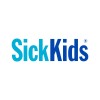
Minoxidil 5% / Botanical Hair Regimen in Men With Thinning Hair and Male Pattern Hair Loss/Androgenic...
Male Pattern of Hair LossAndrogenic AlopeciaThe purpose of this study is to characterize the effect of Minoxidil 5% Foam and Botanical Hair Solution Regimen in men with thinning hair and male pattern hair loss/androgenic alopecia (Norwood III & IV).

Adipose Tissue Derived Stem Cell Based Hair Restoration Therapy for Androgenetic Alopecia
Combination of SVF and PRP for Androgenetic AlopeciaAndrogenetic alopecia (AGA) is a common form of hair loss in both men and women, characterized by progressive patterned loss of hair from the scalp. The current study has been designed for restoration of hair in AGA by using a combination of stromal vascular fraction (derived from the adipose tissue) and human platelet rich plasma.

Clinical Trial to Explore the Efficacy and Safety of DA-4001 After Topical Application
Androgenetic AlopeciaThis study is designed to explore the efficacy and safety of DA-4001 after topical application in male patients with androgenetic alopecia Design : Randomized, double-blind, active-controlled study Investigational Product : Finasteride, minoxidil

Pilot Study to Evaluate the Efficacy of Ruxolitinib in Alopecia Areata
Alopecia AreataAlopecia areata (AA) is a common disease of the immune system, known as an "autoimmune" disease. In the disease, the immune system mistakenly destroys the hair follicle, causing hair to fall out. Despite many people having this disease, research into its cause and into new, better ways to treat AA has lagged far behind other similar diseases of the immune system. Currently, there are no Federal Drug Administration approved drugs for AA. Ruxolitinib (made by Incyte) is an intervention known to effectively treat a disease of the bone marrow, known as myelofibrosis. It is also being studied in the treatment of rheumatoid arthritis, another "autoimmune" disease, by fighting inflammation. There are some genetic and chemical similarities between those with myelofibrosis, active rheumatoid arthritis and AA, suggesting that treatment with ruxolitinib may be effective in AA. In mice specially designed for testing drugs for the treatment of human alopecia areata, this medication worked to prevent the disease AA from starting in mice that would have otherwise developed the disease. To test Ruxolitinib, we are going to treat 12 patients with moderate to severe AA for a minimum of 3 months up to 6 months. This is an "open-label" study, meaning that there will not be a placebo group; all patients enrolled in the study will receive the active medication. The effectiveness of the medication will be measured by changes in hair re-growth as determined by physical exam and photography, as well as by patient and physician scoring. Patients will be followed for another 3 months off of the drug to see if the effects of treatment last and if there is delayed response. The safety of the medication, ruxolitinib, in patients with alopecia areata will also be evaluated. Blood work will be collected before medication is started, during the treatment period, and after ruxolitinib is stopped, in order to monitor for adverse effects of the medication. Small scalp biopsies and peripheral blood will be taken at the beginning of the study before treatment and also after 12 and possibly 24 weeks. Optional biopsies may also be taken at additional time points based on clinical considerations. The chemical analysis of these skin samples and blood will help us to understand how the disease happens, how the treatment works, and may even guide us to better treatments in the future.

Sexual Function in Men Receiving Dutasteride for Androgenetic Alopecia
AlopeciaTreatment of male pattern hair loss (MPHL) or androgenetic alopecia (AGA) with 5α-reductase inhibitor (5-ARIs) has been associated with sexual dysfunction including erectile dysfunction and loss of libido. This will be a multicenter, randomized, double-blind, placebo-controlled, parallel-group study to assess the impact of dutasteride treatment on sexual function as well as subject satisfaction with hair growth and quality of life in men with AGA. This study will consist of a Screening Visit, a 4-week Placebo Run-in Phase, a Treatment Phase of 48 weeks, and a subsequent Follow-up Visit after 4 weeks. The treatment phase will include 24 weeks of double-blind, placebo controlled treatment and 24 weeks of open-label treatment with dutasteride. An extended 6-month Follow-up Visit will be conducted for any individuals with a change in erectile function at the end of treatment.

Safety and Pharmacokinetics Study of New Formulation of Bimatoprost in Patients With Alopecia
AlopeciaAlopecia2 moreThis study will investigate the safety, tolerability, and pharmacokinetics of new formulation of bimatoprost following topical application in patients with alopecia. Two formulations of bimatoprost will be investigated in Part 1 and a third formulation of bimatoprost will be investigated in Part 2. Part 2 will begin after Part 1 has completed.

The Efficacy and Safety of Different Concentrations of Localized Injections of Steroids in the Treatment...
Alopecia AreataAlopecia areata (AA) is a disease characterized by areas of hair loss. Localized steroid injections is the standard treatment for limited disease. There are no existing studies that compare different concentrations of steroids in the treatment of AA. This study will compare the efficacy and safety of different concentrations of localized steroid injections in the treatment of AA. Six treatment sessions will be done over 6 to 9 months. The investigators will compare the following concentrations: 2,5mg/ml, 5mg/ml, 10mg/ml, and normal saline.

A Trial of Clobetasol Propionate Versus Hydrocortisone in Children With Alopecia Areata
Alopecia AreataThe use of topical steroids in the treatment of alopecia areata in children is common practice. However, no particular potency of steroid is accepted as the standard treatment due to the paucity of high quality evidence in the dermatology literature to substantiate their use. Two randomized controlled trials exist assessing topical steroid efficacy in this disorder, both have methodological limitations. The question remains as to which topical steroid is safe and efficacious for use. We performed a double blinded controlled trial to assess the usefulness of a class 1 topical steroid (clobestasol proprionate 0.05%) compared with a class 7 topical steroid (hydrocortisone 1%) in children with alopecia areata.

An Open-Label Single-Arm Clinical Trial to Evaluate The Efficacy of Abatacept in Moderate to Severe...
Alopecia AreataAlopecia areata (AA) is a common disease of the immune system, known as an "autoimmune" disease. In this disease, the immune system mistakenly destroys the hair follicle, causing hair to fall out. Despite many people having this disease, research into its cause and into new, better ways to treat Alopecia Areata has lagged far behind other similar diseases of the immune system. Currently, there are no Federal Drug Administration approved drugs for Alopecia Areata. Abatacept (made by Bristol-Myers Squibb) is a safe intervention known to effectively treat rheumatoid arthritis, another "autoimmune" disease, by fighting inflammation. There are some genetic and chemical similarities between those with active rheumatoid arthritis and Alopecia Areata, suggesting that treatment with the same drug is likely to be effective. In mice specially designed for testing drugs for the treatment of human alopecia, this medication worked to prevent the disease Alopecia Areata from starting. To test Abatacept, we are going to treat 15 patients with moderate to severe Alopecia Areata for 6 months. Each person enrolling into this study will receive the active study drug. The effectiveness of the medication will be measured by changes in hair re-growth as determined by physical exam and photography, as well as by patient and physician scoring. Patients will be followed for another 6 months off of the drug to see if the effects of treatment last and if there is delayed response. We have recently changed the study to allow testing of abatacept in a few patients with alopecia totalis and universalis. Small scalp biopsies and peripheral blood will be taken at the beginning of the study before treatment and then after 4,12 and 24 weeks. The chemical analysis of these skin samples and blood will help us to understand how the disease happens, how the treatment works, and perhaps even guide us to better treatments in the future.

Clinical Trial in Females With Female Pattern Hair Loss
AlopeciaThis is a year-long clinical trial to evaluate the effectiveness and safety in women with Female Pattern Hair Loss (FPHL), comparing a new 5% minoxidil topical foam (MTF) formulation applied once a day versus the 2% minoxidil topical solution (MTS) applied twice a day. This clinical trial uses an objective measurement called Target Area Hair Count (TAHC) to evaluate if there is a change in the number of hairs in the area being examined after using the product for 24 weeks (and also after using the product for 12 Weeks and for 52 weeks). This trial will determine if the benefit of using either study product outweighs the risks.
